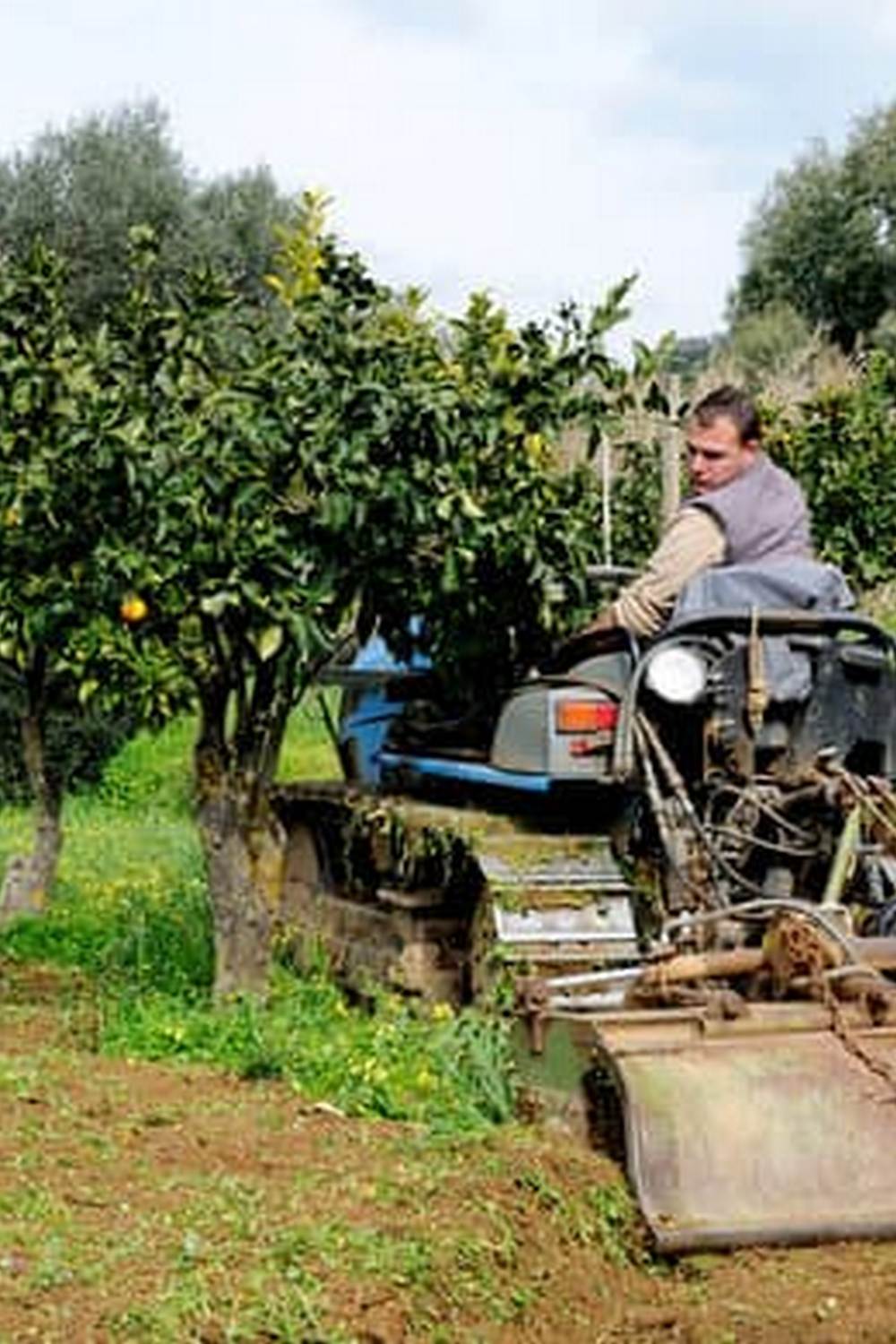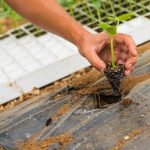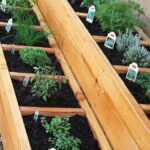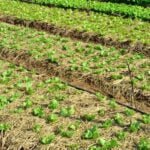Growing vegetables in flower gardens is a trend that combines the beauty of flowers with the functionality of growing your own produce. This concept not only adds visual appeal to your garden but also maximizes the use of space, making it both aesthetically pleasing and productive. By integrating vegetables into your flower garden, you can enjoy a diverse and bountiful harvest while enhancing the overall design of your outdoor space.
When considering growing vegetables in flower gardens, it is essential to choose the right types of vegetables that will thrive in such an environment. Factors such as sunlight exposure, soil conditions, and compatibility with flowers should be taken into account to ensure successful growth. Selecting complementary plants will create a harmonious balance that benefits both the flowers and vegetables, creating a symbiotic relationship within your garden.
In this article, we will delve into the planning and design aspects of integrating a vegetable garden into your flower beds. From layout ideas to companion planting strategies and color coordination tips, we will provide insights on how to create a stunning and functional garden space that combines the best of both worlds.
Stay tuned for expert advice on soil preparation, planting techniques, maintenance, harvesting tips, and real-life success stories to inspire you on your journey of growing vegetables in flower gardens.
Choosing the Right Vegetables
When it comes to growing vegetables in flower gardens, choosing the right vegetables plays a crucial role in the success of your garden. Not all vegetables thrive in the same conditions, so it’s important to select varieties that are suitable for growing alongside flowers. Consider factors such as sunlight exposure, soil conditions, and compatibility with the surrounding plants when making your selection.
Sunlight Exposure
One of the key factors to consider when choosing vegetables for your flower garden is sunlight exposure. Most vegetables require full sun, which means they need at least 6-8 hours of direct sunlight per day to grow and produce well. Make sure to observe the different areas of your garden throughout the day to determine which areas receive adequate sunlight for vegetable growth.
Soil Conditions
Another important consideration is soil conditions. Vegetables typically prefer well-drained, fertile soil with good organic matter content. Conduct a soil test to determine the pH level and nutrient content of your soil. Based on the results, you may need to amend the soil with compost, organic matter, or specific fertilizers to create an optimal growing environment for your vegetable plants.
Compatibility With Flowers
When integrating vegetables into a flower garden, it’s essential to consider their compatibility with the existing flowers. Choose vegetables that have similar growing requirements and aesthetic appeal to ensure a harmonious coexistence in your garden. Some vegetables can even enhance the beauty of your flower beds with their colorful foliage or unique textures. Experiment with different combinations to find the perfect balance between aesthetics and productivity in your garden.
Planning and Design
When incorporating a vegetable garden within a flower garden, planning and design play crucial roles in achieving a harmonious and productive space. Here are some tips to help you seamlessly blend vegetables and flowers in your garden:
- Consider the Layout: Before planting, carefully plan the layout of your vegetable garden within the flower bed. Make sure to account for factors like sunlight exposure, water accessibility, and plant size to ensure optimal growth for all your plants.
- Utilize Companion Planting: Take advantage of companion planting strategies to maximize the benefits of growing vegetables in a flower garden. Pairing vegetables with specific flowers can help deter pests, attract beneficial insects, and improve overall plant health.
- Coordinate Colors: Create a visually appealing garden by coordinating the colors of your vegetable plants with the surrounding flowers. Think about complementary or contrasting hues that will enhance the overall aesthetic appeal of your garden.
By paying attention to these planning and design elements, you can create a beautiful and functional space where vegetables thrive alongside blooming flowers. So don’t be afraid to get creative and experiment with different arrangements to find what works best for your unique garden environment.
Soil Preparation
Amending the soil is often necessary to create a suitable environment for vegetables to thrive in a flower garden setting. Adding organic matter such as compost or well-rotted manure can improve soil structure, fertility, and drainage. It also helps beneficial microorganisms thrive, creating a more balanced ecosystem for plants to grow. Additionally, incorporating organic fertilizers can provide essential nutrients that may be lacking in the soil, promoting vigorous growth and bountiful harvests.
Fertilizing is another key aspect of soil preparation when growing vegetables in flower gardens. While organic amendments can help improve overall soil health, supplemental fertilizers may be needed throughout the growing season to meet specific nutritional requirements of different vegetable crops. Understanding the needs of each type of vegetable plant, including its preferred pH range and nutrient uptake, can help gardeners make informed decisions about when and how to fertilize their plants for optimal growth and productivity.
| Aspect | Importance |
|---|---|
| Soil Test | Provides valuable information on soil composition |
| Amending Soil | Improves soil fertility and structure |
| Fertilizing | Supplements nutrients for optimal plant growth |
Planting Techniques
When it comes to growing vegetables in flower gardens, understanding the various planting techniques is crucial for a successful and productive harvest. One of the primary methods of starting vegetable plants in a flower garden is through seed planting. Properly planting seeds at the right depth and spacing ensures healthy growth and development.
Some vegetables that are commonly started from seeds include carrots, lettuce, radishes, and beans. It’s essential to follow the instructions on the seed packets for optimal results.
Transplanting is another key planting technique to consider when integrating vegetables into a flower garden. For vegetables that require a longer growing season or those that benefit from a head start indoors, such as tomatoes and peppers, transplanting seedlings is typically the best approach.
When transplanting seedlings into the garden, make sure to do so during mild weather conditions to reduce stress on the plants. Additionally, proper spacing between transplants is essential to allow for adequate airflow and sunlight for each plant.
Spacing considerations play a vital role in the success of growing vegetables in flower gardens. Proper spacing not only helps prevent competition among plants for sunlight, water, and nutrients but also aids in managing pests and diseases more effectively.
Before planting vegetables in your flower garden, refer to spacing recommendations provided on seed packets or plant tags. By following these guidelines and considering factors like plant size at maturity, you can create an organized and visually appealing garden that promotes healthy growth throughout the season.
| Planting Technique | Benefits |
|---|---|
| Seed Planting | Cost-effective way to grow vegetables with many varieties available |
| Transplanting | Allows for early start of certain crops with strong root systems |
| Spacing Considerations | Promotes proper growth by reducing competition among plants |
Maintenance and Care
Maintaining and caring for vegetable plants in a flower garden is essential to ensure healthy growth and bountiful harvests. Proper watering, weeding, pest management, and disease prevention are key aspects that require attention throughout the growing season.
Watering
One of the most crucial aspects of maintaining vegetable plants in a flower garden is providing adequate water. Vegetables typically require consistent moisture to thrive, especially during hot summer months. It is important to water deeply and evenly, ensuring the roots receive enough hydration. Consider installing drip irrigation systems or soaker hoses to deliver water directly to the root zone, minimizing evaporation and reducing water waste.
Weeding
Weeds can compete with vegetable plants for nutrients, water, and sunlight. Regular weeding is necessary to prevent weeds from taking over the garden bed. Hand-pulling weeds or using mulch as a weed barrier can help keep weed growth under control. Be mindful not to disturb the roots of vegetable plants while weeding to avoid causing any damage.
Pest Management and Disease Prevention
Keeping pests at bay and preventing diseases are vital for the health of vegetable plants in a flower garden. Monitor plants regularly for any signs of pest infestations or disease symptoms. Consider using organic pest control methods such as insecticidal soaps, neem oil, or introducing beneficial insects like ladybugs.
Practicing good sanitation by removing any diseased plant material promptly can also help prevent the spread of diseases among plants. Rotate crops each season to reduce the risk of soil-borne diseases affecting new plantings. By staying vigilant and proactive in managing pests and diseases, you can help your vegetable plants thrive in your flower garden setting.
By following these maintenance and care tips for growing vegetables in flower gardens, you can enjoy a beautiful fusion of colors from flowers alongside an abundance of fresh produce from your garden. Remember that regular monitoring, timely watering, effective weeding practices, integrated pest management strategies, and disease prevention measures are crucial for optimal plant health and productivity within this unique gardening setup.
With proper care and attention, you can create a harmonious balance between aesthetics and functionality in your garden sanctuary.
Harvesting and Enjoying
Harvesting fresh vegetables from your flower garden is not only a rewarding experience but also a delicious one. The process of growing vegetables in flower gardens allows you to enjoy the beauty of blooming flowers while reaping the benefits of homegrown produce. Whether you have a small raised bed mixed with flowers or vegetables scattered throughout your garden beds, harvesting fresh vegetables can be a fulfilling activity.
To make the most of your vegetable harvest, it is essential to pick them at the right time. Different vegetables have different indications for when they are ready to be harvested. For example, tomatoes should be harvested when they are fully colored and slightly soft to the touch, while leafy greens like lettuce should be picked when they reach their desired size. It’s important to check each plant’s specific requirements for optimal harvest timing.
Once you have gathered your fresh vegetables from the garden, it’s time to bring them into your kitchen and incorporate them into meals and recipes. The taste of freshly harvested vegetables is incomparable to store-bought produce, as their flavors are at their peak. Consider simple dishes like salads with mixed greens, cucumbers, and tomatoes or roasted vegetables seasoned with herbs from your garden.
The possibilities are endless when it comes to using your homegrown bounty in the kitchen. By growing vegetables in flower gardens, you not only enhance the aesthetics of your outdoor space but also elevate the quality of food on your plate.
Success Stories and Inspiration
As we have explored the various aspects of growing vegetables in flower gardens, it becomes evident that this unique gardening approach offers a blend of beauty and functionality. By combining the vibrant colors and textures of flowers with the practicality of homegrown vegetables, individuals can create visually stunning and productive garden spaces. The concept of growing vegetables in flower gardens not only enhances the overall aesthetics but also provides a sustainable source of fresh produce right at your doorstep.
From selecting the right vegetables to planning and designing a harmonious layout, there are numerous factors to consider when embarking on this gardening journey. The careful preparation of soil, diligent planting techniques, and ongoing maintenance are all crucial for ensuring a successful vegetable garden within a flower bed. However, the rewards are truly fulfilling – witnessing the growth and development of your own produce, harvesting fresh vegetables straight from your garden, and savoring the flavors in delicious meals.
As we delve into success stories of individuals who have embarked on growing vegetables in flower gardens, we find inspiration and motivation to start our own garden projects. These stories serve as testaments to the beauty and feasibility of incorporating edible plants into ornamental beds.
Whether you have limited space or simply desire a more holistic approach to gardening, integrating vegetables into your flower garden can lead to bountiful harvests and a deeper connection to nature. So why not take that first step today towards creating your own unique blend of flowers and veggies in your outdoor oasis?
Frequently Asked Questions
Can I Plant Vegetables in My Flower Garden?
Planting vegetables in your flower garden is definitely possible, but it’s important to consider a few factors. Make sure the vegetables receive enough sunlight and are planted in well-draining soil. Also, be mindful of spacing to prevent overcrowding.
What Vegetables and Flowers Grow Well Together?
Certain vegetables and flowers can thrive together when planted in the same garden bed. For example, marigolds are known to repel pests from tomatoes, while radishes can help deter cucumber beetles. Pairing compatible plants can lead to a healthier and more productive garden.
Can You Grow Vegetables in Flower Potting Soil?
Growing vegetables in flower potting soil is feasible, but you may need to make some adjustments. Ensure the potting mix is nutrient-rich by adding compost or fertilizer specifically designed for vegetables. Additionally, make sure the pots have proper drainage to prevent waterlogging.

If you’re looking to get into vegetable gardening, or are just looking for some tips on how to make your current garden better, then you’ve come to the right place! My name is Ethel and I have been gardening for years. In this blog, I’m going to share with you some of my best tips on how to create a successful vegetable garden.





